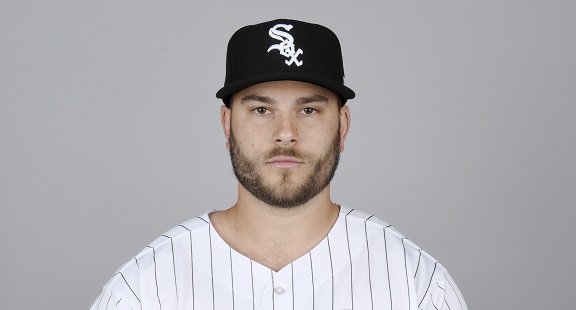By Mark Simon
In addition to tracking defense in great detail, Sports Info Solutions tracks many things related to pitching and hitting. Our pitching database is complete back to 2004 and allows us to look at the effectiveness of pitches both on a seasonal and by-game basis.
With that in mind, we thought we’d take a statistical look at the pitchers with the best pitches by pitch type. We’re using a combination of things as our guide, most notably the FanGraphs Pitch Values leaderboards (whose aim is to show which pitches saved the most runs).
ESPN’s Baseball Tonight used to have a segment called Baseball Tonight called “That’s Nasty!” These are the pitches that were the most worthy of showing.
We’re starting with the changeup to … change things up a bit (plenty of time to look at best fastballs and such). We’ll give you a tidbit to explain why the pitcher is on the list and then share the pitcher’s best (or most memorable game) with the pitch in terms of outs recorded without allowing a hit, walk, or hit by pitch.
Cole Hamels
The stat: Hamels is the standard-setter here. He has the highest Pitch Value with his changeup of any pitcher over the 16-season span from 2004 to 2019.
One game to remember: July 30, 2007 (Phillies vs Cubs)
Hamels line: 8 IP, 1 R, 3 H, 8 K, 2 BB
The changeup: 37 of 47 for strikes, 12 misses on 29 swings; Cubs 0-for-15, 6 K against it
Hamels set a precedent for excellence early in his career, as this start came from his second season. The stories from that day were of how Hamels’ second start at Wrigley Field went better than his last appearance there, prior to which he sliced his left index finger with a knife (and then allowed nine runs in two innings). All Hamels’ fingers were working well in this game, as his changeup baffled the Cubs in a 4-1 win.
There were even better days ahead for Hamels at Wrigley Field. He’d go on to pitch a no-hitter there in 2015.
Johan Santana
The stat: Santana has four of the top eight seasons in changeup Pitch Value in the five-year period from 2004 to 2008.
One game to remember: September 27, 2008 (Mets vs Marlins)
Santana’s line: 9 IP, 0 R, 3 H, 9 K, 3 BB
The changeup: 28 of 42 for strikes, 12 misses on 22 swings, 8 K – Marlins 0-for-13 against it
Throughout his career, Johan Santana was considered to have one of the best changeups in MLB, one that led him to two Cy Young Awards with the Twins and a no-hitter with the Mets.
This may have been his best day with that pitch. With the Mets in the midst of a second consecutive late-season collapse, Santana shut out the Marlins on the next-to-last day of the season. Yes, the Mets lost the next day and missed the playoffs, but this game is well-remembered for Santana’s amazing effort.
What made it particularly impressive? It was later revealed that he made this start with a torn meniscus in his knee.
Tim Lincecum
The stat: Lincecum held hitters to a .119 batting average against his changeup in 2009. That’s the lowest batting average against the pitch by any of the more than 200 pitchers who recorded at least 150 outs with it in a season (think of those as your changeup “superusers”)
One game to remember: April 28, 2010 (Giants vs Phillies)
Lincecum’s line: 8 1/3 IP, 2 R, 3 H, 11 K, 1 BB
The changeup: 31 of 40 for strikes, 14 misses on 30 swings, 9 K – Phillies 0-for-15 against it
For a few years, Tim Lincecum’s starts were appointment viewing and his changeup (called a splitter by some and often confused with his slider) was a big reason why. Lincecum could make dominant lineups look meek, like he did against the Phillies for almost all of this game.
In 2009, the pitch saved Lincecum 33.7 runs, per FanGraphs’ Pitch Value stats. That’s the most for any pitcher’s changeup in this 16-season span.
Lincecum once told the San Francisco Chronicle of his changeup “If guys are going to continue to take swings like that and continue to be fooled, I guess I’ll keep throwing it.”
The Phillies would score three runs in the ninth inning to tie and then win in extra innings, but Lincecum and the Giants got them back by beating them in the NLCS on the way to a World Series title.
James Shields
The stat: Shields’ changeup had the second-highest Pitch Value with his changeup from 2007 to 2013
One game to remember: June 24, 2011 (Rays vs Astros)
Shields’ line: 9 IP, 1 R, 3 H, 9 K, 1 BB
The changeup: 28 of 33 for strikes, Astros 0-for-17, 5 K against it
In his prime, James Shields was a workhorse capable of throwing 250 innings a season and going deep into games because of a great pitch mix. The changeup was his money pitch and in this game it overwhelmed an Astros team that finished 56-106.
This wasn’t so much a swing-and-miss pitch for Shields as it was one that induced ill-timed swings. The pitch netted him 18 of the 27 outs, though only five that were by strikeout.
“There’s no superlative that I can give you that is adequate,” Rays manager Joe Maddon told reporters.
Said then-Rays third baseman Evan Longoria: “It shouldn’t be that easy.”
Félix Hernández
The stat: From 2009 to 2014, Félix Hernández had the second-highest Pitch Value for a changeup in MLB. In that span, he won a Cy Young Award, twice led the AL in ERA and led the league in Hits per Nine Innings three times.
One game to remember: June 8, 2014 (Mariners vs Rays)
Hernandez’s line: 7 IP, 0 R, 4 H, 15 K, 1 BB
The changeup: 22 of 36 for strikes, 13 misses on 20 swings, Rays 0-for-12, 10 K against it
Yes, the opponent was the Rays, but this wasn’t Felix Hernandez’s perfect game. It was perfect for his changeup, which helped him to 15 strikeouts. It’s amazing what a difference three miles-per-hour can make. Hernandez allowed four hits (and a walk) and netted only six outs with a fastball that averaged 91 MPH. The changeup averaged 88 and was untouchable.
“The man was outstanding,” said Rays manager Joe Maddon. “That changeup was a fastball until the last moment, then it became a changeup. I think he was better than when he threw the perfect game”
Danny Salazar
The stat: Salazar had the highest Pitch Value for a changeup of any pitcher from 2015 to 2017. Opponents hit .142, .143, and .157 against it in those three seasons.
One game to remember: May 10, 2015 (Indians vs Twins)
Salazar’s line: 7 IP, 1 R, 1 H, 11 K, 0 BB
The changeup: 31 of 40 for strikes – Twins 0-for-17, 9 K against it
There was a time not long ago when Danny Salazar was considered one of the top young pitchers in baseball and his changeup was considered one of the best pitches in the game.
“My changeup is weird,” Salazar told me in 2016. “It feels like a string and then it drops or goes inside or outside. By throwing every pitch as if it’s the last pitch I throw, it’s helping me. I’m aggressive. It’s hard to hit. When I would just try to throw it for a strike at a low velocity, they’d do damage to it. My arm angle is the same for every pitch. It makes it tougher for the hitter to guess what I’m throwing.”
This was one of his best days, a dominant game against the Twins in which their hitters flailed repeatedly against the pitch. After a leadoff home run by Brian Dozier, Salazar retired 21 straight hitters and struck out six in a row in one stretch. This was the fifth start in a five-start stretch in which Salazar overcame the control bugaboo that had plagued him earlier in his career. To that point in the season, he had 48 strikeouts and 5 walks.
Luis Castillo
The stat: Castillo’s prolific changeup recorded 161 strikeouts in 2019, more than double the pitcher with the next-highest total (Stephen Strasburg 76).
One game to remember: August 5, 2019 (Reds vs Angels)
Castillo’s line: 7 IP, 2 R, 3 H, 13 K, 1 BB (highlights here)
The changeup: 33 of 51 for strikes, 18 misses on 28 swings, 11 K, 1 BB – Angels 0-for-14 against it
It was at its very best in this game, almost completely unhittable. Sure Mike Trout tagged him for a home run in the sixth inning. But the rest of the Angels lineup had almost no chance. His 11 strikeouts with the changeup match the most by a pitcher in a game in the last 16 seasons (Johan Santana and Alex Cobb also had 11)
“He’s a joy to catch,” Reds catcher Tucker Barnhart said afterwards. “There were a few times I didn’t even put down a sign. He knew what he wanted to throw, and he threw it.”



